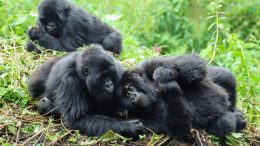When the coronavirus pandemic eventually lifts, a lot of things in our daily lives will finally go back to normal.
Some things, however, may need to change on a more permanent basis.
Take ecotourism, for example. Before the coronavirus hit, thousands of people a year travelled to Rwanda, Uganda and the Democratic Republic of the Congo for the opportunity to see critically endangered mountain gorillas in the wild. This was not just a once-in-a-lifetime opportunity for most tourists. The visits also generated incredibly popular social-media posts, with some YouTube videos drawing millions of eyeballs.
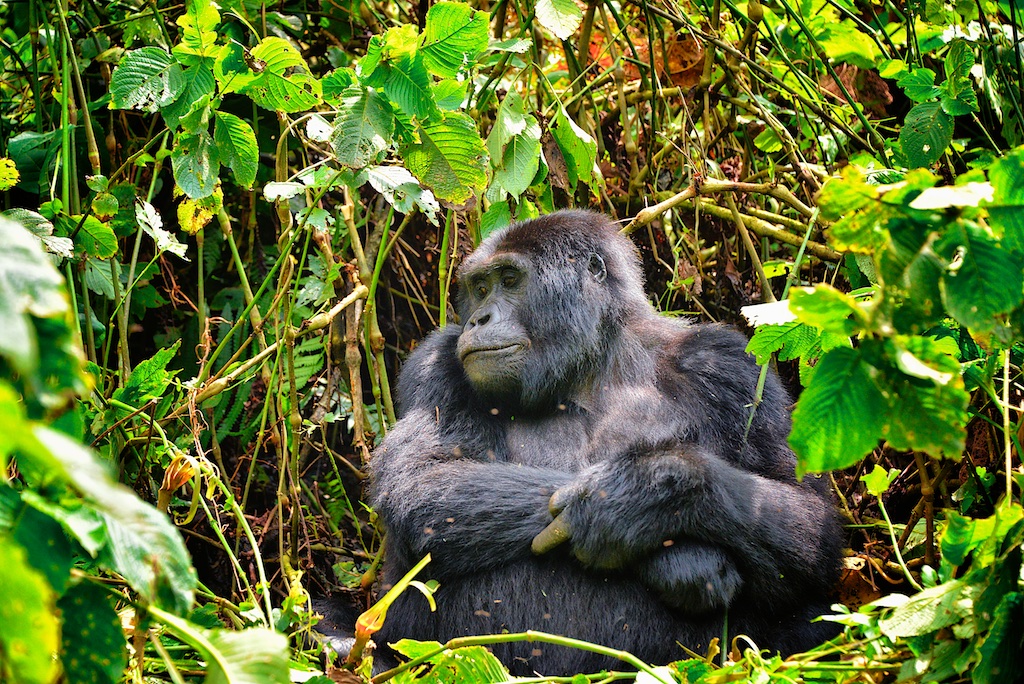
But here’s the thing: Tourism is both a boon to conservation efforts to save these species from extinction and a potential threat. Mountain gorillas (Gorilla beringei beringei) are one of our closest nonhuman relatives; they share about 98% of our DNA, which means we can also share the same diseases. With only about 1,000 mountain gorillas on Earth, all of which live in two restricted habitats, a novel pathogen could rage through and devastate their populations. Mountain gorillas frequently suffer from viral respiratory diseases, and wildlife vets often need to dart symptomatic apes with antibiotics to help them overcome secondary bacterial infections. Even with those efforts, infectious diseases account still for about 20% of the species’ deaths each year, according to the veterinary organization Gorilla Doctors.
Could these rare animals also catch a more deadly disease such as COVID-19? It’s not all that unlikely a scenario, given prior behavior by tourists. A recent scientific study published in PLOS One analyzed nearly 300 mountain gorilla videos posted by tourists to YouTube. More than 200 of those videos depicted humans and gorillas in the same shots, while 40% showed the two species within arm’s reach or even making physical contact.
In addition to this lack of respect for physical distancing, only 3.5% of the videos showed humans obviously wearing masks.
These videos were all shot and posted well before the pandemic, of course — long before masks became the health standard of the day — but tourism authorities have long known about the risk of conveying human pathogens to gorillas. All operations — which closed this past March to protect the animals — already had standards in place that require tourists maintain at least a seven-meter (23-foot) distance between humans and apes, and some require masks.
This research shows that not only did people tend to ignore these standards before the pandemic, the videos that displayed the riskier behavior — including physically touching the gorillas — were by far more popular than the ones that depicted safer activity. And as a result, the number of videos posted has increased every year.
The paper calls this a “negative spiral,” where the videos depicting unsafe behavior become popular enough to motivate other people to copy the same behaviors.
Lead researcher Ryoma Otsuka, a graduate student at Kyoto University, says he was inspired to examine this phenomenon after seeing these types of videos and his own experience working in mountain gorilla habitat.
“During my fieldwork in Uganda, I heard that some tourists said that they wanted to touch gorillas or get touched by gorillas, as they have seen such too-close human-gorilla interactions in some YouTube videos,” he recounts. He even witnessed several of these interactions while he was in the field.
Given that personal history, Otsuka says he expected to find some videos of unsafe behavior, but the quantity he and coauthor Gen Yamakoshi uncovered — and their popularity — astonished him.
“It was surprising that there are some videos illustrating very close interactions and they were getting a lot of views and likes,” Otsuka says. The most popular videos — some of which have racked up millions of views — showed humans and gorillas on screen at the same time, and often involved some manner of contact.
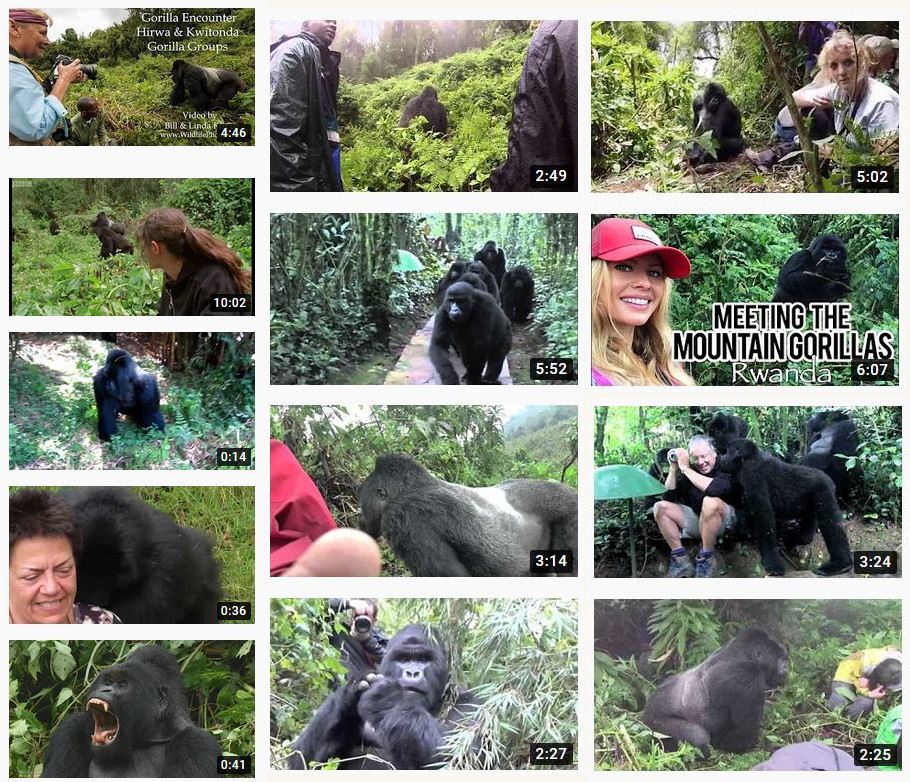
Otsuka is quick to point out that we shouldn’t necessarily blame individual tourists for this. Mountain gorilla tourism isn’t like a safari, where visitors watch animals from the safety and seclusion of vehicles. Instead people make long treks by foot up the mountain through unfamiliar jungle, and gorillas can be waiting around just about any turn.
On top of that, gorillas are sometimes the ones who approach humans, not the other way around.
“Many gorillas have been visited by tourists every day since they were born,” he says. “Sometimes, some gorillas do come close to you or just pass near you. So field staff, such as ranger guides and trackers, and tourists must be very, very cautious about the distance,” especially since the apes are habituated to human presence.
A Time for Adaptation
Otsuka says this research reveals the need for mountain gorilla tourism operations to adapt for these uncertain times and beyond, when asymptomatic COVID-19 carriers may still be traveling around the world and carrying the virus with them.
“I don’t know if — or when — mountain gorilla tourism will start up again,” he says. “If it does, I think much stricter tourism regulations will be needed. After the pandemic, I think most people including managers, field staff and even future tourists will need to be much more concerned about the risk of disease transmissions.”
He adds that the current pause in operations “might be a good time to rethink the tourism regulations.”
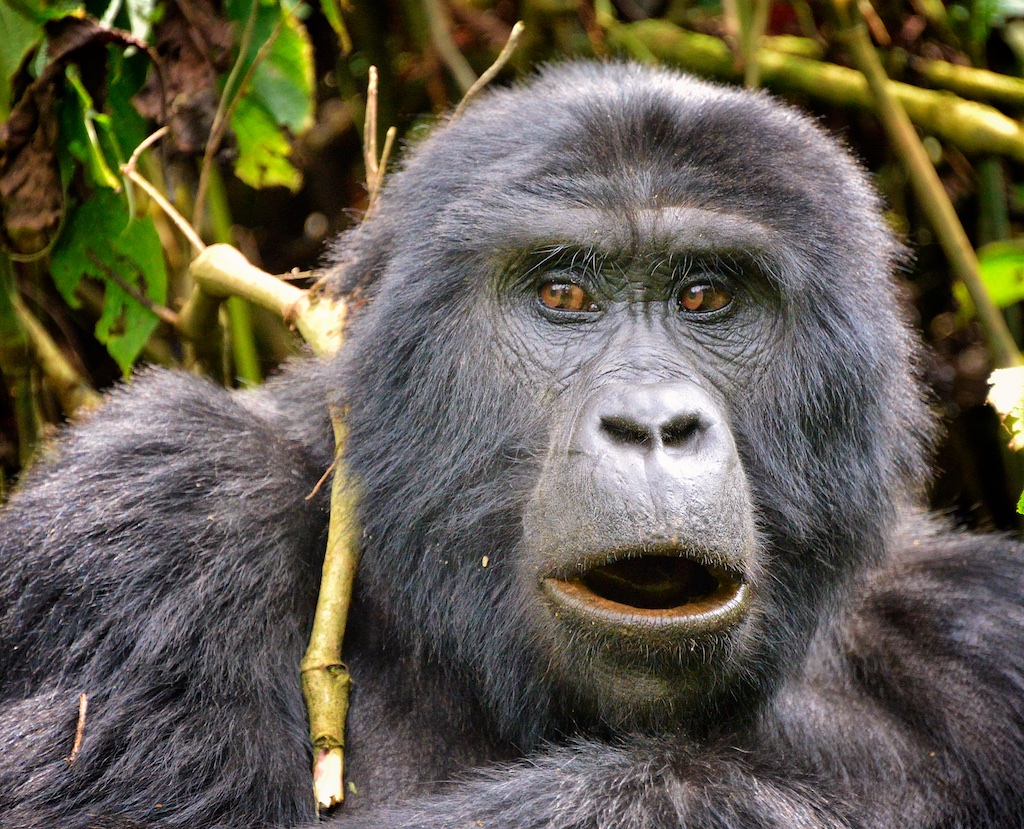
Those regulations are currently inconsistent across the three mountain gorilla range countries.
“Wearing masks has been proposed for many years in mountain gorilla tourism,” Otsuika says. “It’s mandatory in the Democratic Republic of the Congo, but not in Uganda and Rwanda. I hope wearing a mask will be mandatory for anyone who visits if mountain gorilla tourism starts up again.”
This, he suggests, might require work to see how current regulations and standards break down in practice. For example, are there any factors that made it hard to maintain the seven-meter rule, and why did masks show up in so few videos if they’re required in some places? He’d like to see workshops with rangers, tourism companies, lodges and tourists themselves to see what kind of consensus can be achieved. “It will also help us get a more complete picture of human-gorilla interactions,” he says.
Of course, the pandemic may have taught at least some of us the need to continue to wear masks in risky situations, but how that will play out in the years ahead, and how that will factor into tourism operations, remains to be seen.
The Rwanda Development Board, which is responsible for gorilla tourism in that country, did not respond to a request for comment for this article.
But at least one other organization is already adapting to a post-COVID world.
“We’ve evolved our procedures since this pandemic began,” says Donna Gorman, communications specialist for the Dian Fossey Gorilla Fund, which conducts research and conservation efforts for the species. “We were already quite cautious around the mountain gorillas, but we reduced the number of people in the forest — research was halted, but protection needed to continue. Masks and gloves, handwashing, larger distance from gorillas… After each individual gorilla in a family is accounted for, the team moves 100 meters away. Also, our tracker teams now stay in the forest for two-week rotations, reducing the chance they’ll come into contact with the disease or spread it to the gorillas.”
Social Media Responsibility? Or Just Human Behavior?
On top of changing individual behaviors, should social-media companies also adapt and discourage people from watching videos that display unsafe human-animal interactions and could inspire other viewers to do the same?
There’s precedent, as a push from advocacy organizations has already inspired one such action in certain cases.
“Instagram heard us and launched a new ‘wildlife warning’ page, where every time users search for hashtags like #koalaselfie, #elephantride and #slothselfie a message pops up, informing them about the animal suffering behind the photos,” says Nicole Barrantes, a campaign assistant with World Animal Protection, US, which has also published a Wildlife Selfie Code encouraging people to pledge to not take wildlife selfies if getting the shot means getting too close to a wild animal.
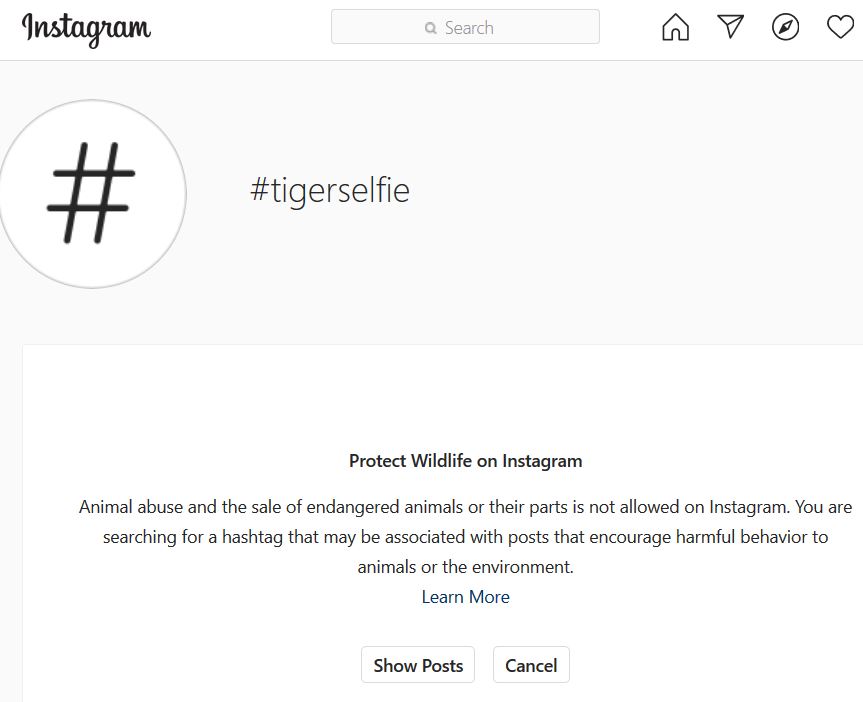
“Moving forward, we believe people will be less inclined to support or seek out wildlife selfies now that they’re aware of the consequences for the animals,” she says.
Google, which owns YouTube, did not respond to an interview request to discuss this new mountain gorilla research or how they currently handle videos depicting unsafe behavior with wildlife.
But they and other social-media platforms may want to take notice. While researching this article, I found similarly unsafe mountain gorilla photos and videos on Instagram, Twitter and Facebook.
Otsuka concentrated on YouTube because it’s so heavily used, but he says he hopes to conduct similar research on other platforms. He also suggests that other researchers might want to investigate this topic for other vulnerable species, such as orangutans.
And then there’s the human element: What inspires this unsafe behavior in the first place? “I am interested in how and why some people want to get closer to wildlife,” Otsuka says. “If some humans — not all, of course, but there must be some — have desires to get close to wildlife for better photos, videos, selfies and so on, where did such desires come from? How were such desires or expectations created in the different social, cultural or economic backgrounds? What do we make of the differences between those who have such desires and those who don’t?”
All of this speaks not just to our new post-pandemic reality, but the ongoing desire for people to experience wildlife, often in unsafe ways — like the woman who recently got kicked by a bison after getting too close for a selfie, or the craze for posing with baby tigers or lions, many of which were raised in inhumane conditions.
While many of these interactions may be driven by altruism or admiration, these cases illustrate how peoples’ actions can cause unintended consequences for themselves, animals or both.
“People love animals, and sometimes they love them too much,” says Barrantes. “Remember the rule of thumb: If you can hug, hold or take a photo with a wild animal, chances are it’s cruel.”
![]()

